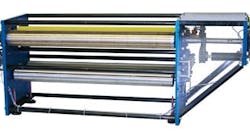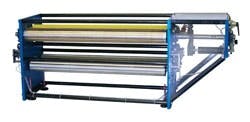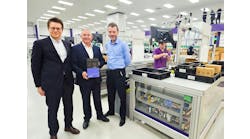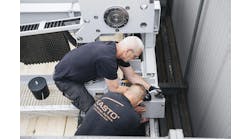Jim Montague is the executive editor for Control, Control Design and Industrial Networking. Email him at [email protected].
There are MANY more holes in many more places doing many more important tasks than most of us realize. Paper and textiles are obvious, but how about making plastic bags breathable to better preserve produce, or micro-perforating paper sacks to let air out during filling, or needling racing tires to improve performance?
These are just a few of the applications to which Stewarts of America in Simpsonville, S.C., applies its nearly 140 years of expertise in pin technology. It provides nano, micro and macro perforating machines, tooling and services, precision drilled parts, embossing tooling and equipment, pinned products for textile processing, electronic drives, control panels and system integration services. Its perforating technologies include hot-needle, cold-needle, slit, laser, cross-web, thermal and customized solutions.
"We do standalone projects, but 90% of our machines are integrated into existing production lines with unwinders and rewinders or sheet loaders at either end," says Craig Jackson, Stewart's vice president. "Our motto is, ‘If you need a hole in a substrate, we can put it there.'
"We consider everything from users' individual space considerations to the materials they're working with. Our customers talk directly to our engineers with no middle man," Jackson explains. "This is what really sets us apart. We have a full engineering staff in house, and we do all our own controls, control panels and automation. Because of the recent economic downturn, many of our competitors make cookie-cutter machines in a few, inflexible sizes. That's something we refused to do.
Stewarts of America's perforating units allow film manufacturers and converters to add value to what would otherwise be regular plastic film. These films now can breathe or allow permeation at a controlled rate.
Source: Stewarts of America
"From time to time, we'll receive machines built by other manufacturers that require upgrades and/or modifications. Most of them are European, so having a local specialist is a huge advantage for our customers. When designing a perforator, the material's thickness, density, surface tension and resistance to perforating all have to be taken into consideration. Therefore, a bespoke machine tailored to each application is critical. The build quality of our machinery is such that it will take industrial applications in stride, while a one-size-fits-all machine just won't cut it."
Jackson adds that Stewarts' machines typically use standard electric motors, such as Baldor's Super E, and small ac drives from KB, ABB and Siemens, as well as variable-speed and reversible drives, especially for web-following applications. Though controls for perforating and pinning machines didn't need to be very complex in the past, some new motion-control requirements call for using PLCs, which were later upstaged by some HMIs that could perform those functions. Jackson says Stewarts usually employs Wonderware InTouch HMI software on Siemens HMI screens.
"Besides working with tough materials, we work with stretchable films and other very-thin and delicate materials, and again, we have to build our equipment accordingly," Jackson adds. "This means the drives and controls have to be extremely accurate because they might have to follow a web without adding any tension to it. So, many of our tolerances are getting tighter, and we need controls that can handle them. Still, if an HMI can handle 10 I/O points, then we still might not need a PLC."
Founded in 1874 in Scotland, W.R. Stewarts started out manufacturing and repairing pinned hackles and staves for the jute, flax and hemp industries. In 1976, it joined forces with an American company and moved to the U.S. to support its booming textile industry. It was bought out by its present owners in 1999, and continues as a separate entity. While it still specializes in perforating and pinned products, it has also diversified into many other industries, including packaging, food, composites, aerospace and automotive. The firm also supports international markets with partnerships in Europe and India, and a solid network of agents worldwide for local customer support. It ships machines and parts to other machine builders and end users in more than 50 countries.
"Our expansion into international markets started a bit earlier, but in the past 10 years we've also diversified our perforation and pin technologies into packaging, food and construction products," Jackson adds. "We think our history of customizing so many individual projects is what gives us the ability to push the envelope in new technical areas.
"For example, back in the day, a density of 300 and 600 pins per square inch was considered high density, but now we're up to 5,000 pins per square inch for some applications. So when a user requires any type of perforation, we have the expertise to assist them, no matter how unorthodox their project is. From plastic films to chickens, from foils for NASA to salmon patties and pizzas, we can develop a perforating solution for them. In fact, we just finished a precision perforating unit for making composite material more breathable on the fuselage of the Virgin Galactic aircraft.
"Most recently, we've been working on a pistachio-picking application. We're trying to develop rollers that can pick up on the split in the shell that almost all the nuts develop when they're ripe, and eliminate the need for hand sorting. But, even as we get into these new and unexpected areas, we're still working with some of our original OEMs in Europe and South America on equipment with expanded capabilities to improve quality and speed for processing textile fibers. Either way, we're going to continue to stay on the brink, and continue push that envelope."







